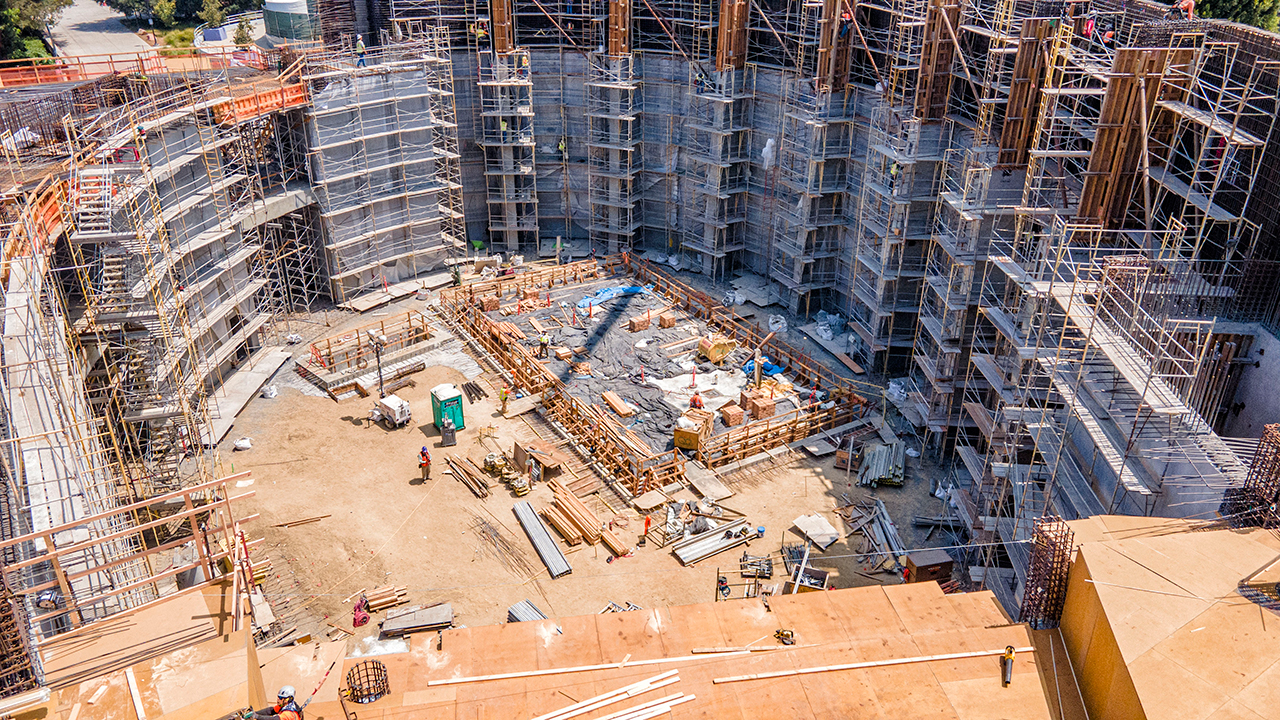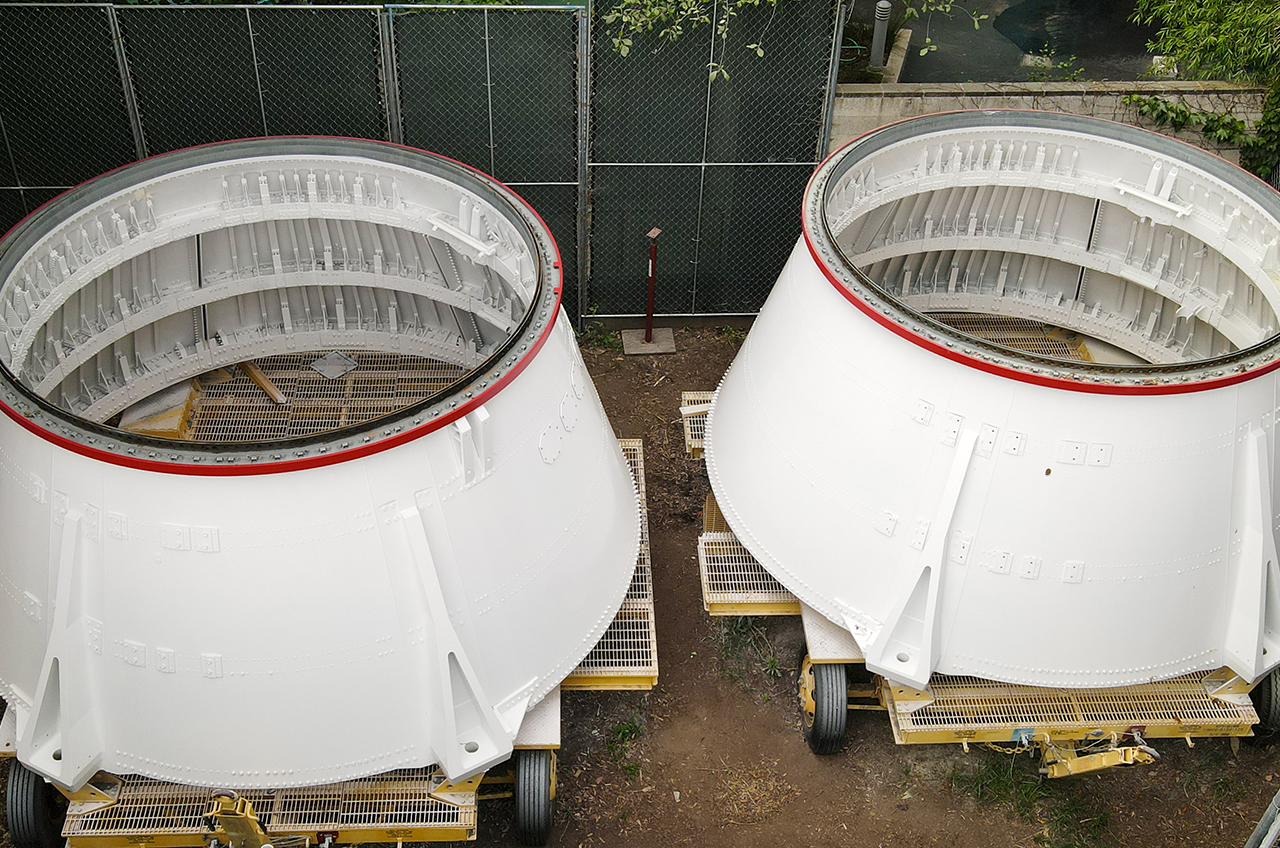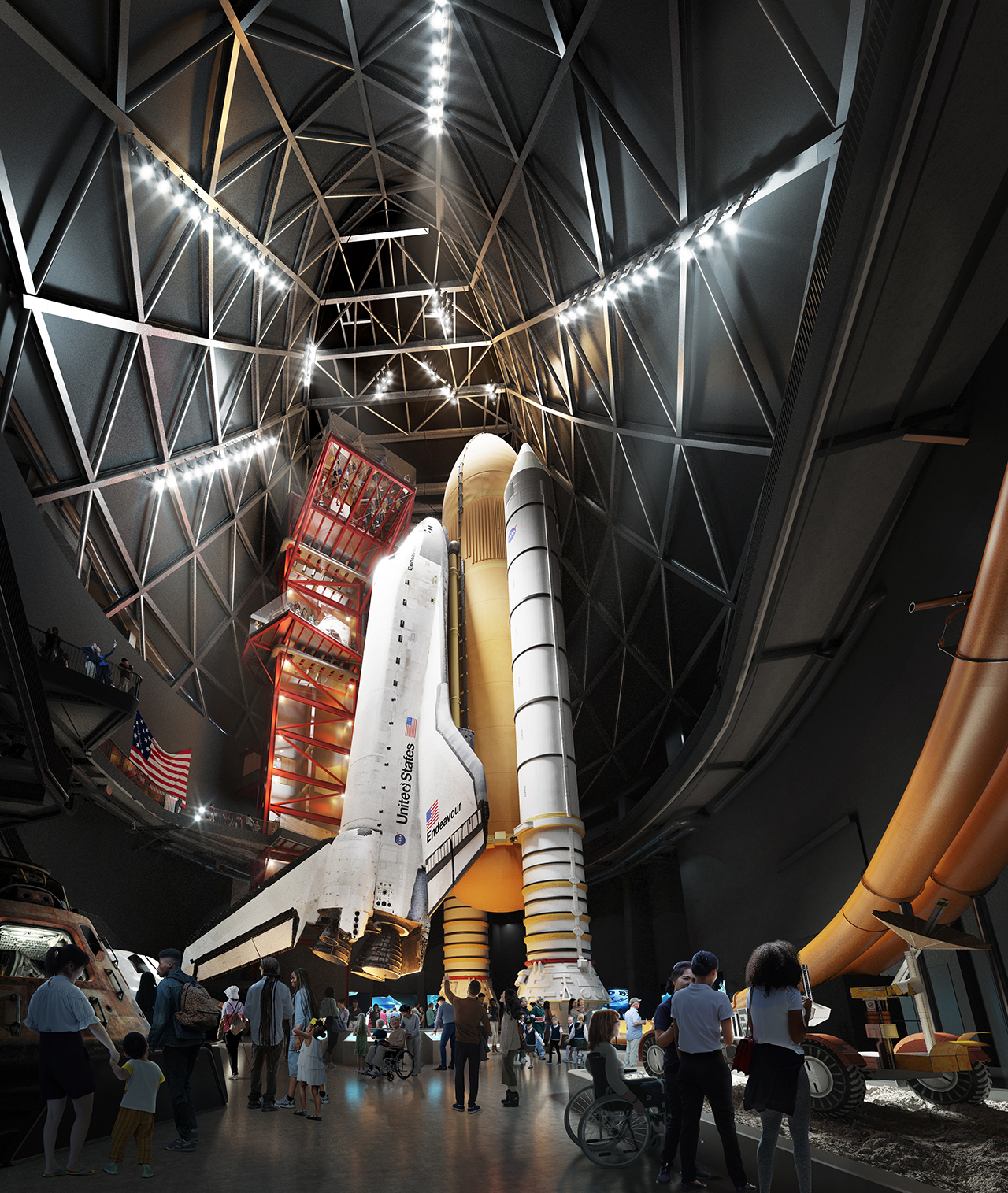It has taken more than a decade of planning, engineering studies and fundraising, but finally, the space shuttle Endeavour is ready to go vertical.
The California Science Center, which since 2012 has exhibited the retired NASA orbiter in the horizontal orientation, has set the date for the spacecraft’s new launchpad-like display to begin being installed in the new Samuel Oschin Air and Space Center (which is also still under construction). On July 20 — the 54th anniversary of the first Apollo moon landing — the base pieces for Endeavour’s twin solid rocket boosters, the aft skirts, will be hoisted by crane into place.
“This might seem like a small first step, but it is a really a giant leap toward setting the foundation for Endeavour’s vertical exhibit,” Jeffrey Rudolph, president and chief executive officer of the California Science Center, said in an exclusive interview with collectSPACE.com. “When the aft skirts are installed, it represents the first step in a decades-long dream.”
The move will also begin a countdown to Endeavour going off display for a few years. The public has until the end of this year to see the vehicle close to the ground. The exhibit, as it is now and has existed in the Samuel Oschin Display Pavilion, is the only place in the world where the public can walk under the tile-lined belly of a winged orbiter.
Related: Where are NASA’s space shuttles now?
That experience will end on Dec. 31, in preparation for Endeavour being stacked with its solid rocket boosters and external fuel tank in 2024. Even after the shuttle has been installed, there still will be a few years of work needed to complete the Oschin Air and Space Center before the public can be let in.
“We started this in 2012 and there have been numerous hiccups along the way, but we are there now and the construction is going very well,” said Lynda Oschin, whose foundation made the lead gift toward Endeavour’s vertical exhibit in honor of her late husband. “Everybody is very excited.”
Less than 1/16 of an inch
“I am also a little nervous,” said Oschin. “There is little to no room for error in putting this together and standing it up.”
The move of the aft skirts is fairly straightforward and requires only a relatively small hydraulic truck crane that will arrive at the science center the morning of the lift and depart right after. As hardware goes, the two 7.5-foot-tall by 18-foot-wide (2.3 by 5.5 meters) skirts will be the easiest components of the shuttle to move.
The difficulty comes in their alignment.
“We are going to be surveying them 20 ways back and forth, because the skirts have to be absolutely in the right position. They have to be absolutely parallel, they have to be absolutely vertical, because even a tenth of an inch error at the skirt [level] will be more than an inch off at 150 feet [46 meters] up,” said Dennis Jenkins, a veteran shuttle engineer and director of the science center’s project to display Endeavour.

“If the skirts are not perfectly positioned, shimmed and aligned, it will mean that the two attach points for the solid rocket boosters to connect with the external tank won’t be level or won’t align with each other to whatever degree of error we made at the bottom,” said Jenkins. “So we are going to spend a lot of time making sure that the skirts are absolutely perfect, position-wise.”
In fact, the science center’s surveyor will be bringing in new hardware in hopes of getting measurements within 1/16 of an inch, Jenkins told collectSPACE.
“We wish he could do a little bit better and he’s actually buying some new equipment to try and get a little bit better. But we cannot live with anything more than that, we really can’t,” he said.
For safety reasons and access concerns, the July 20 move of the aft skirts will not be open to the public.
Related: Facts about NASA’s space shuttle, the 1st reusable spacecraft
History, from the ground up
One of the factors that is making Endeavour’s vertical display possible is the use of all flight-proven or built-for-flight hardware. NASA and California Science Center studies have shown that the stresses of displaying the shuttle upright, even over a long span of time, are less than what the vehicle experienced during its ascent to space.

“From the aft skirts, everything is real as they stand right now,” said Jenkins. “The booster separation motors, which we will put on in a couple of years, because they might get damaged hanging around a construction site — those will be replicas, because NASA won’t give us real motors. They don’t like giving out propellant.”
“But the aft skirts, themselves, are as real as they get. One of them essentially flew the entire program, from beginning to end,” he said.
According to flight histories provided by the science center, the aft skirt that will sit at the base of the left solid rocket booster made its first flight in 1982 on STS-3, the third flight of the space shuttle. It then flew with STS-9, STS-51B, STS-28, STS-37, STS-47, STS-62, STS-74, STS-102, STS-120 and STS-130. (Two of those launches, 47 and 130, were with Endeavour.)
The skirt that will stand with the right booster first entered service in 1985 with the launch of STS-51G. It then remained on the ground for 16 years before being used again for STS-104, STS-114 (the first return-to-flight mission after the loss of space shuttle Columbia in 2003) and STS-128.

Now, the two skirts and all of the hardware that will follow to make Endeavour’s vertical display a reality will add “Mission 26” to their credit — the science center’s designation for exhibiting the space shuttle.
“It’s an exciting time,” said Rudolph. “We are thrilled to be proceeding with this challenging endeavor.”
Follow collectSPACE.com on Facebook and on Twitter at @collectSPACE. Copyright 2023 collectSPACE.com. All rights reserved.
